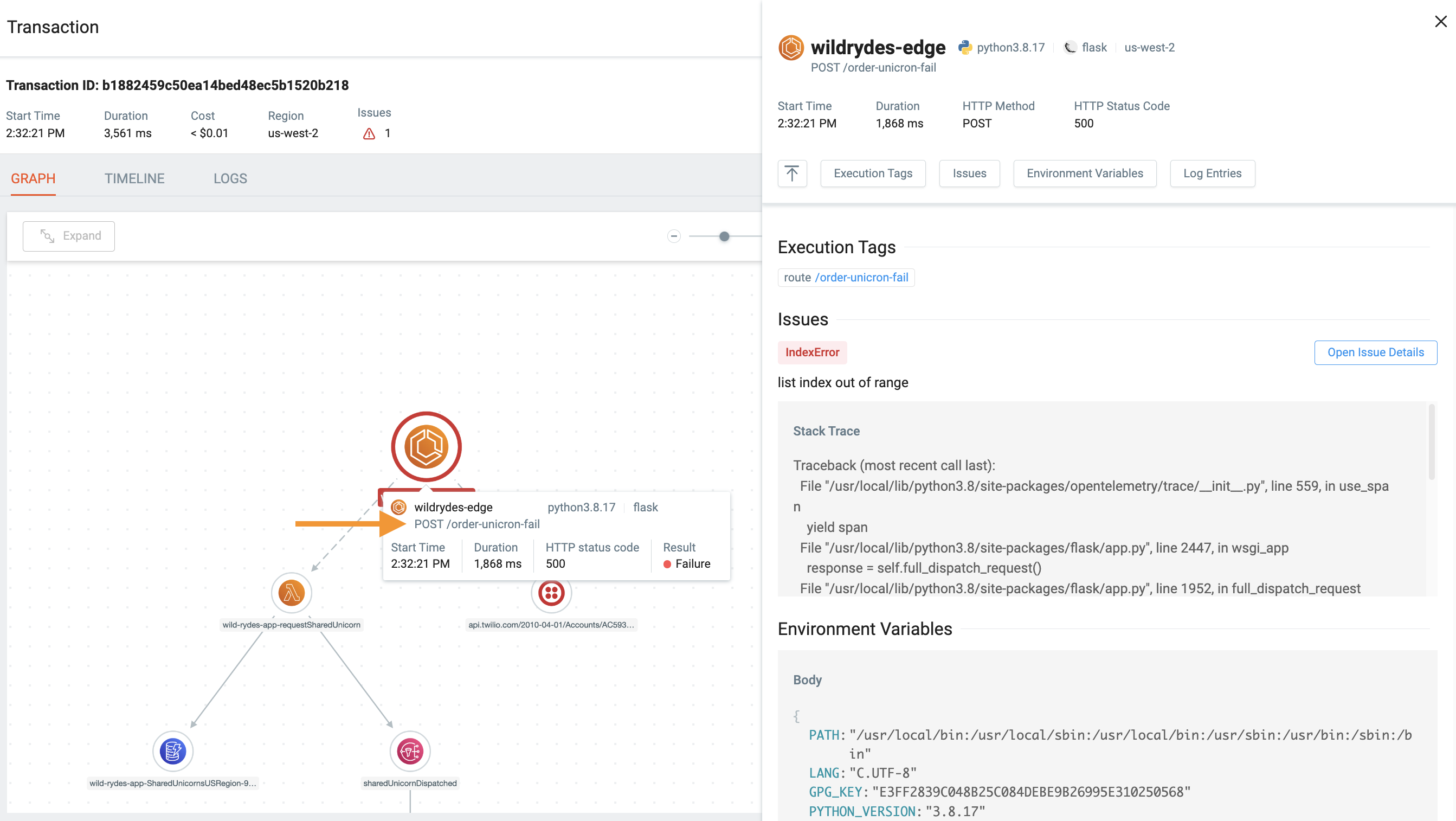Transaction Endpoints
Overview
Endpoints provides a more detailed view of the service operations, including its API, with the added benefit of detecting the associated service endpoint utilized as part of the trace. For example, an HTTP method and path combination would make up an endpoint of an HTTP service.
Lumigo employs predefined rules to autonomously identify endpoints, which are subsequently displayed on the platform as part of the trace display.

Endpoint Mapping Rules
Lumigo uses a set of predefined rules to automatically map endpoints. The respective endpoint is created whenever a rule matches.
Endpoint Type | Rule |
|---|---|
HTTP Endpoint |
|
SQL Database Endpoints | The first 50 characters of the SQL query
Example: |
GraphQL Endpoints |
|
MongoDB / DocumentDB Endpoints |
|
Redis Endpoints | Redis command, a.k.a., the operation passed to the client.
Example: |
Twilio Endpoints | Twilio method, a.k.a., the operation passed to the client.
Example: |
Cognito |
|
Amazon DynamoDB |
|
Amazon EventBridge |
|
Amazon Kinesis Firehose or Stream |
|
Amazon S3 |
|
Amazon SNS |
|
Amazon SQS |
|
AWS STS |
|
Else |
|
Learn more
Transaction View
Drill down into the details of requests as they propagate from one service to the next.
Transaction Timeline
Explore performance bottlenecks, lengthy asynchronous calls, timeouts, and cold starts.
Transaction Logs
Review log entries collected from your applications that were part of the transaction.
Trace Details
Drill down into the stack trace, issues and the payload of requests and responses.
Updated 4 months ago